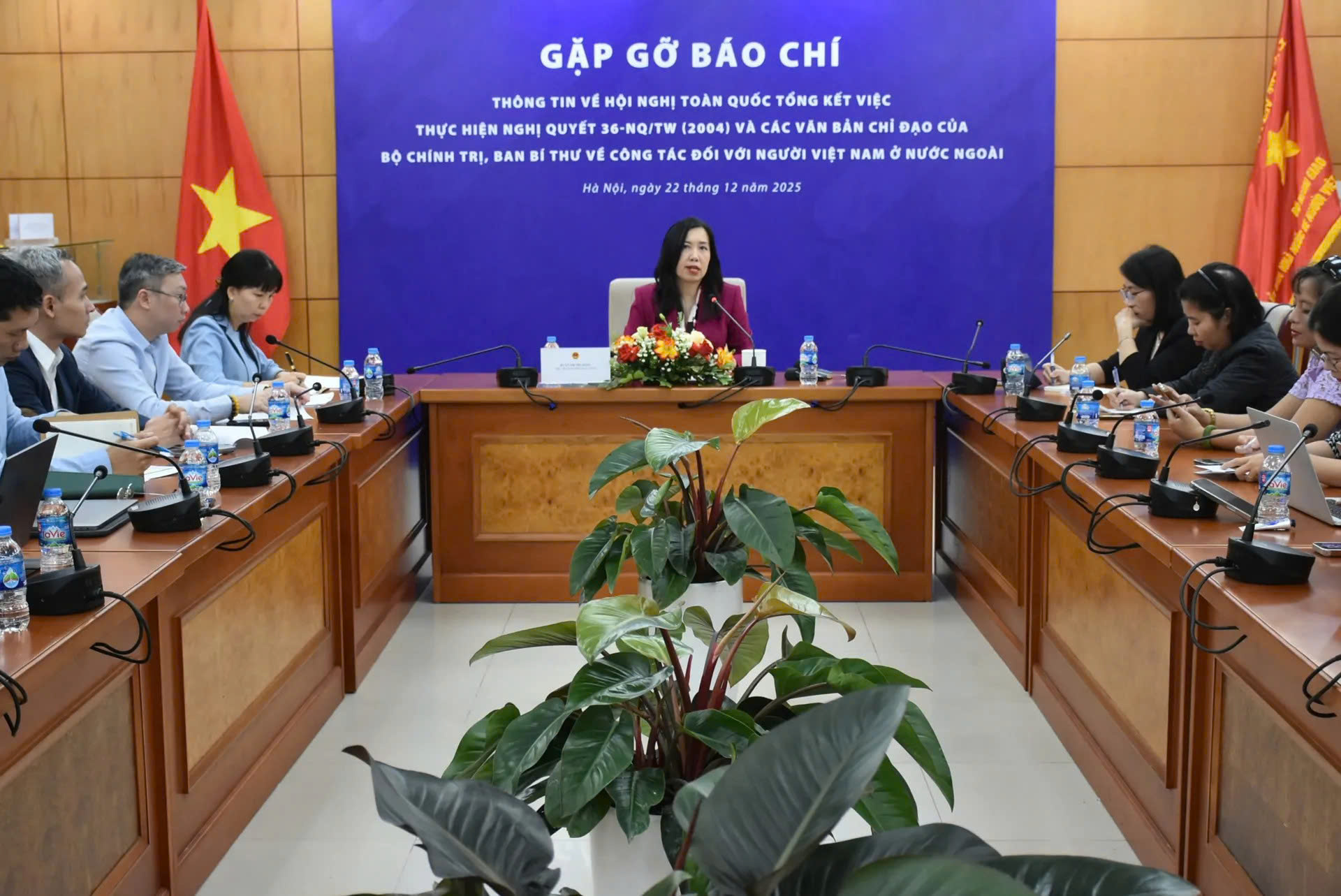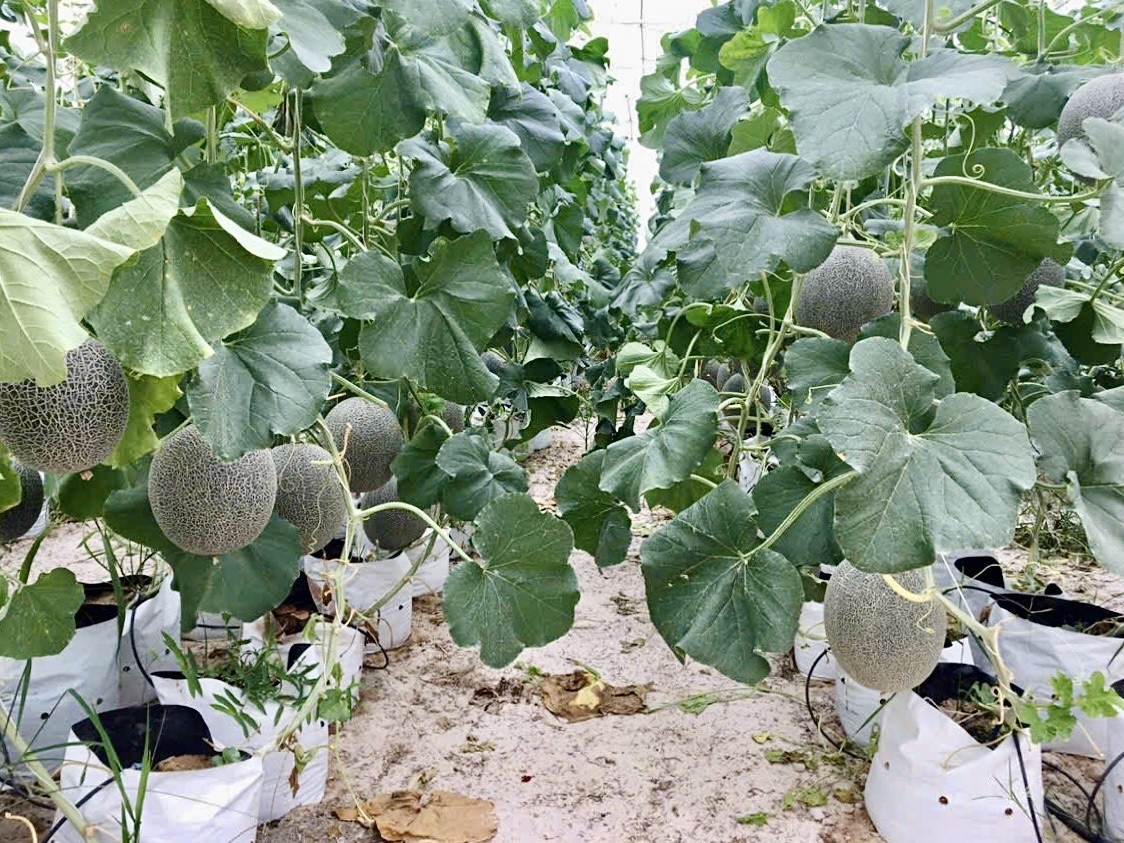
Vietnam to review over 20 years of Resolution 36 on overseas Vietnamese
19:05 | 23/03/2025 16:32 | 23/12/2025News and Events
In Binh Thuan Province, a strong wave of agricultural transformation is underway, driven by coordinated policies that support greenhouse investment, preferential credit, and product marketing. These initiatives are providing vital momentum for modern agriculture aligned with the sustainable development of this coastal locality.
On its journey to develop high-tech agriculture in Binh Thuan's arid Tuy Phong District, Thien An Cooperative has focused not only on safe and efficient production, but also on creating replicable models that can be transferred to ethnic minority regions.
To better understand the technologies currently applied by the cooperative and their specific impacts, Vietnam Economic News’ reporters have recently spoken with Le Minh Thach, Deputy Director of Thien An Cooperative.
Despite the harsh conditions in Tuy Phong District, Thien An Cooperative has successfully developed a high-tech melon farming model. What inspired you to take such a bold path?
Thach: We started from nothing, just a group of young people with a shared dream: To shift the mindset of farming from the old notion of “working hard equals making profit” to a model where “knowledge creates real value.” Tuy Phong is home to many ethnic minority communities, with barren land, harsh climate, and year-round Lao winds sweeping across the white dunes. The land was mostly left fallow or used for low-value crops like cassava and beans.
 |
| Le Minh Thach, Deputy Director of Thien An Cooperative. Photo: Ngoc Hoa |
But we realized that unless something changed, local farmers would remain trapped in the cycle of “planting, waiting for buyers, being underpaid, and suffering losses.” The sight of entire harvests left to rot due to lack of buyers, or farmers selling at a loss and unable to afford the next crop cycle, haunted us. We refused to accept that fate.
We began with a simple belief: Let’s try farming the way industry works, applying standards with quality control, data tracking, and most importantly, market-oriented planning. Our goal was to make the path easier for others to follow. That remains our biggest motivation.
What technologies has the cooperative adopted for planting, care, and harvesting, and how have these benefited production?
Thanh: We have invested in modern greenhouses, each about 1,000 square meters, equipped with Israeli-standard automated drip irrigation systems. The entire crop care process is monitored using sensors that track temperature, humidity, light levels, and most importantly, soil mineral content at different growth stages.
The drip irrigation system has enabled the cooperative to save up to 50 percent of water and fertilizer compared to traditional methods, ensuring optimal nutrient absorption at the root zone, reducing pest issues, and improving fruit quality. It also cuts irrigation labor costs by around 70 percent, significantly reducing overall production costs and increasing profits.
All farming activities are digitally recorded. Each harvested batch is traceable via QR codes, offering complete transparency across the production chain, an essential requirement for accessing modern distribution channels like supermarkets, clean produce stores, and e-commerce platforms.
Thanks to our integrated use of high-tech solutions, over 95 percent of our fruits are classified as Grade 1, and we achieve yields of 5-6 tonnes per sào (approx. 360sq.m) per crop. Most importantly, the fruits are consistently high in quality, attractive, crisp, sweet, and command premium prices in the market.
I truly believe that if these solutions are scaled up, especially in ethnic minority regions, local farmers will absolutely be capable of producing high-quality, branded agricultural products that can enter both domestic and international supply chains.
 |
| The story of Thien An Cooperative is more than just a successful farming model. Photo: Ngoc Hoa |
Many farming models in mountainous areas have failed due to difficulties in selling products. What lessons from Thien An’s market-oriented approach could inspire ethnic minority farmers?
This is what we always emphasize: don’t grow what you like, grow what the market demands. Today’s market is extremely discerning. Consumers want not just delicious fruit, but also traceability, transparency in production processes, appealing packaging, and safety certifications. This means farmers can no longer operate spontaneously.
I believe that if businesses and cooperatives can serve as intermediaries, conducting market research and standardizing processes, farmers can simply produce based on purchase orders, making sales much easier.
At Thien An Cooperative, this is exactly what we do. We begin by identifying demand from large distribution channels: supermarkets, e-commerce platforms, clean food chains, and then organize production accordingly. From seed varieties and crop calendars to packaging dimensions and label content, everything is tailored to meet market specifications. We hope to share this model with ethnic minority farmers. Only then can their products truly cross mountains to reach urban markets, and even go global.
 |
| The advancement of high-tech agriculture cannot rely solely on pioneering enterprises. Photo: Ngoc Hoa |
How can Thien An Cooperative’s farming model be expanded to even more disadvantaged areas, especially remote ethnic minority regions?
Ethnic minority farmers are extremely hardworking and capable. What they lack is access to information and connection with markets. We propose three main solutions:
First, local authorities and the Ministry of Industry and Trade should strengthen linkages between distributors and ethnic farming areas. Distributors can advise farmers directly on what to grow, how to process it, and how to package it, so that once the work is done, the products are market-ready. We’ve seen many failed farming models in the highlands not because farmers lacked skills, but because they didn’t know what the market truly needed.
Second, we must intensify basic training for farmers on clean production, packaging, labeling, and traceability. At Thien An Cooperative, we have seen that when farmers are clearly guided, from keeping digital farming logs and using QR codes to harvesting and post-harvest handling, their products not only become easier to sell but also fetch significantly higher prices. Step by step, we must digitize agricultural products so that they can appear on e-commerce platforms and in supermarkets. Otherwise, if everything is done manually, without production unit codes or safety certifications, sales will forever be confined to the village.
Third, businesses and cooperatives like ours must open up, share our models, and work hand-in-hand with farmers. We must look beyond short-term profits, because when raw material areas grow sustainably, the entire value chain will become truly profitable. It’s time for businesses to stop seeing themselves as mere “buyers” and start acting as partners, co-creators of local brands and regional supply chains.
One last point I’d like to make: We need a shift in support strategy. Don’t just give people fishing rods. Give them a map of the ocean. In other words, show them where the market is going and how to get there, so their products won’t get stuck in storage. Only then can highland agricultural products go further, last longer, and sustain value.
The story of Thien An Cooperative is more than just a successful farming model. It’s a call for a new economic mindset in agriculture. More broadly, it’s a message to policymakers and the business community: If we want ethnic minority agricultural products to reach further, we must begin by empowering local farmers with knowledge, technology, market data, and sustainable value chain linkages. The advancement of high-tech agriculture cannot rely solely on pioneering enterprises like Thien An. It also requires synchronized efforts from local authorities and relevant ministries. |

19:05 | 23/03/2025 16:32 | 23/12/2025News and Events

19:05 | 23/03/2025 16:30 | 23/12/2025Trade

19:05 | 23/03/2025 23:26 | 22/12/2025Industry

19:05 | 23/03/2025 23:19 | 22/12/2025News and Events

19:05 | 23/03/2025 14:41 | 22/12/2025News and Events